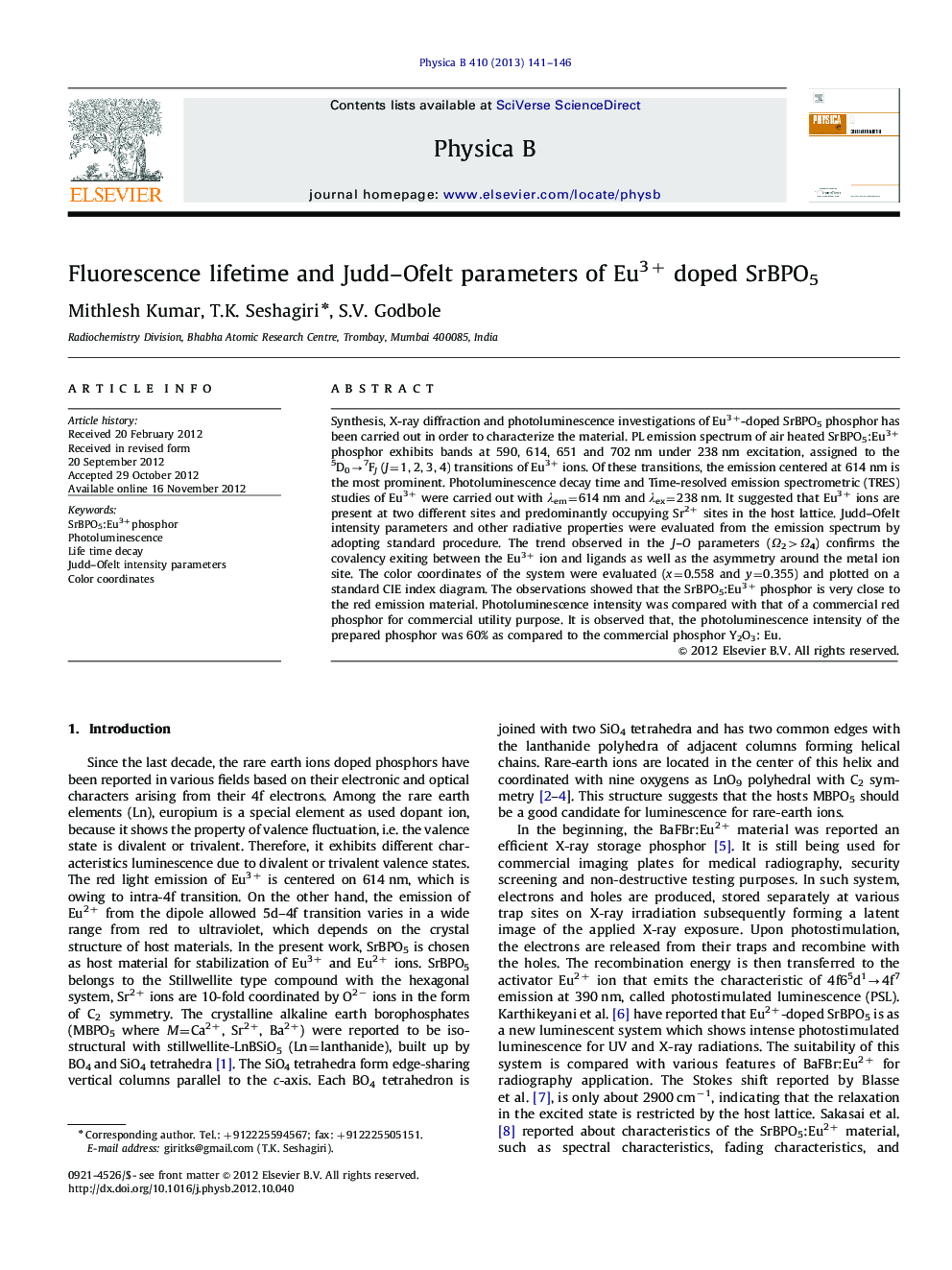| Article ID | Journal | Published Year | Pages | File Type |
|---|---|---|---|---|
| 1810233 | Physica B: Condensed Matter | 2013 | 6 Pages |
Synthesis, X-ray diffraction and photoluminescence investigations of Eu3+-doped SrBPO5 phosphor has been carried out in order to characterize the material. PL emission spectrum of air heated SrBPO5:Eu3+ phosphor exhibits bands at 590, 614, 651 and 702 nm under 238 nm excitation, assigned to the 5D0→7FJ (J=1, 2, 3, 4) transitions of Eu3+ ions. Of these transitions, the emission centered at 614 nm is the most prominent. Photoluminescence decay time and Time-resolved emission spectrometric (TRES) studies of Eu3+ were carried out with λem=614 nm and λex=238 nm. It suggested that Eu3+ ions are present at two different sites and predominantly occupying Sr2+ sites in the host lattice. Judd–Ofelt intensity parameters and other radiative properties were evaluated from the emission spectrum by adopting standard procedure. The trend observed in the J–O parameters (Ω2>Ω4) confirms the covalency exiting between the Eu3+ ion and ligands as well as the asymmetry around the metal ion site. The color coordinates of the system were evaluated (x=0.558 and y=0.355) and plotted on a standard CIE index diagram. The observations showed that the SrBPO5:Eu3+ phosphor is very close to the red emission material. Photoluminescence intensity was compared with that of a commercial red phosphor for commercial utility purpose. It is observed that, the photoluminescence intensity of the prepared phosphor was 60% as compared to the commercial phosphor Y2O3: Eu.
